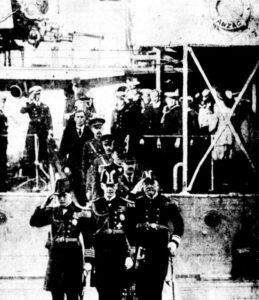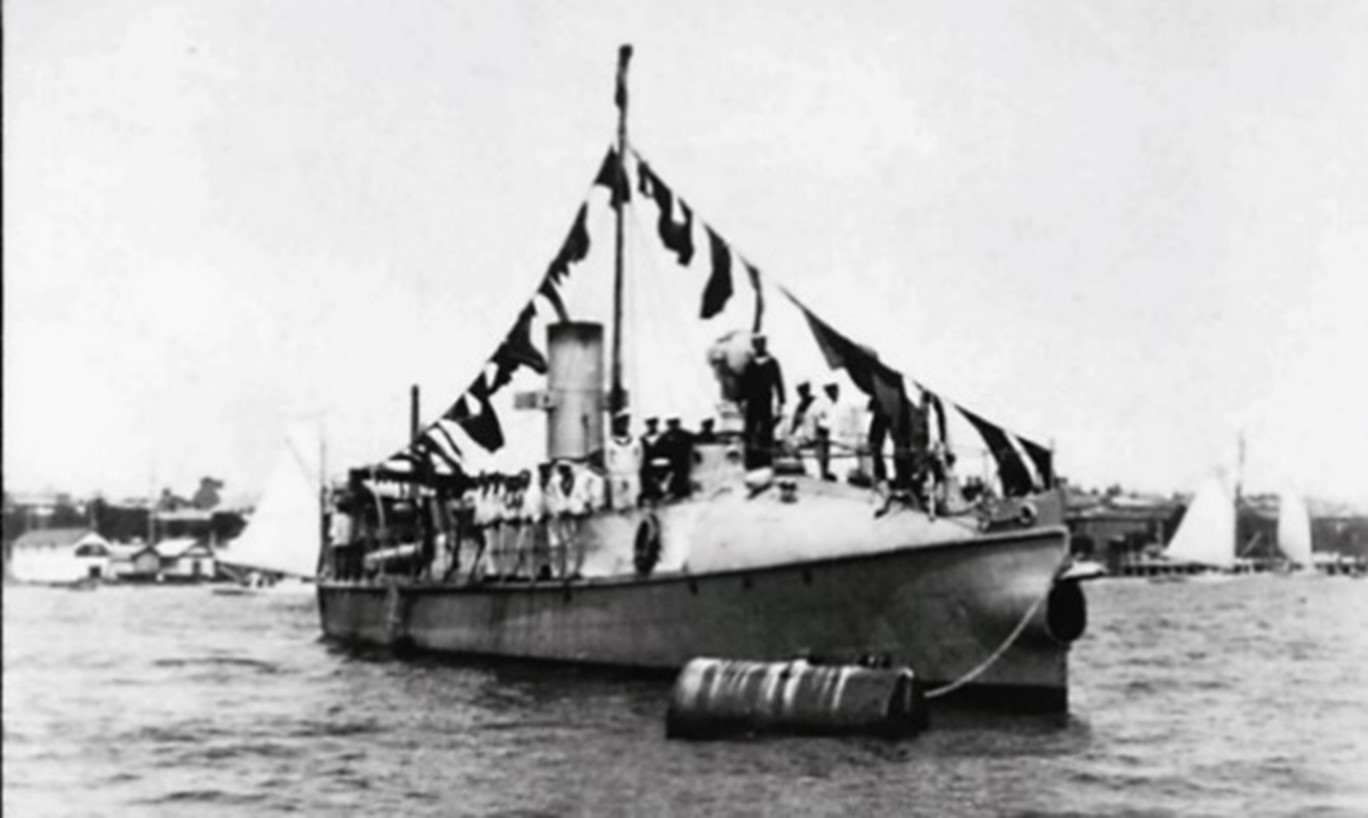By Ross Gillett
“In the perfect beauty of the crisp autumn afternoon, the Prince of Wales made his triumphant entry to the homeland of the Anzacs in the Australian destroyer that bore their names….”
With these words, the Melbourne newspaper, The Argus announced the arrival of HRH the Prince of Wales (later King Edward VIII) in Melbourne on Thursday, 27 May 1920. The Victorian capital was a port of call on the Prince’s tour of Australia, New Zealand and the West Indies. The Prince, accompanied amongst others by the man who was to become Earl Mountbatten of Burma, spent almost three months in Australia visiting every state and capital city.
However, the Prince nearly didn’t make it to Melbourne. Or, rather HMS Renown nearly didn’t make it because of the heavy fog which greeted the battlecruiser at the heads of Port Phillip. By 0700, the fog had engulfed Renown. It was virtually impossible for a ship of her size to pass through the narrow and shallow entrance of the bay except at slack water and with clear visibility. Renown, in the fog, “stopped steaming and began screaming”. She ‘screamed’ with her siren and called by wireless to Melbourne to request Australian destroyers to come and collect the Prince.

The new Australian ‘S’ class destroyers Stalwart, Success, Swordsman, Tasmania and Tattoo and the Marksman class destroyer leader Anzac, formed up in a single line ahead at 10 to 15 knots and, once outside the heads, spent close upon two hours searching for Renown. There was a near collision between Success and Tasmania, but finally, the Prince of Wales and the official party trans-shipped to Anzac at 1300. The other destroyers took up their escort stations and increased speed to 27 knots to bring the Prince to Melbourne.
“It was a striking run up the Bay and produced a magnificent spectacle” – presumably for those spectators lucky enough to see it through the fog. Indeed, aboard the destroyers this moment of high speed was looked forward to with eagerness and delight, not only to impress the Prince, but also because the “speed capacities of these magnificent oil-burning destroyers had not been as yet properly tested.”
If the dash into Melbourne had produced a “magnificent sea-scape” an even better sight was in store for the next day, Friday, 28 May, when the review of the Royal Australian Navy was to take place for the Prince. Twenty-eight warships of the RAN took part in the review, ranging from the 75 ton, 28 year old Countess of Hopetoun and the 36 year old gunboat Protector, to the pride of the fleet, the battlecruiser Australia.
Specifically, the ships involved were the six River class torpedo-boat destroyers Parramatta, Yarra, Warrego, Huon, Swan and Torrens, as well as the five newer destroyers of the ‘S’ class. Also present were the three new sloop minesweepers presented to the RAN by the British Admiralty in 1919; Geranium, Marguerite and Mallow. The submarine depot ship Platypus was also in attendance at the review with her ‘brood’ of four ‘J’ class submarines.Platypus would eventually become an institution in the RAN, not paying off until 1958.

Argus Newspaper Thursday 27 May 1920, page 9
The most impressive row of ships included Australia, the cruisers Melbourne, Sydney and Brisbane, as well as the older Challenger class cruiser of 1902 vintage, Encounter.
The assembled VIPs aboard the sloop and Royal Yacht Franklin and on the old torpedo boat Countess of Hopetoun(which preceded Franklin around the five lines of naval ships) had plenty to look at and muse about. Sir John Monash, the commander of the Australian Imperial Force in France in the Great War, for example, had a ‘kindly eye for the Cerberus’ the ancient turret ship/monitor built for the Victorian government in 1870. The Cerberus now was used as a depot ship and could be seen nearby although she was not in the review as such. Monash said that although Cerberus was “too tough to break up, “she was only “so much iron now.” Monash also took interest in the Countess of Hopetoun “once our pride as a torpedoer” but now “in her old age, seeming to shrink smaller and smaller.”
Admiral Sir William Rooke Creswell, just recently retired as First Naval Member on the Board of the Royal Australian Navy and justly recognised as “Father of the RAN”, had a kind eye for the old gunboat Protector. Creswell had commanded the Protector when she was the pride of the South Australian Navy and had taken her to help Royal Navy forces in the Boxer Rebellion of 1900. Protector, although only of 920 tons had a huge armament for her size and had been kept busy on patrol duties in World War I. Those looking at the tiny, but very graceful Una saw a ‘trophy’ of the Great War, the ship having been built as the German-New Guinea administrator’s yacht Komet. Other ships which impressed the spectators ashore and afloat included the light cruiser Sydney with her magnificent fighting record against the German raider Emden at the Cocos Islands in the Indian Ocean.

Australia, in which the Prince of Wales lunched, also gained the interest of the crowd because of her name and size and because she symbolised the Royal Australian Navy and the Australian desire to show the mother navy her willingness to defend herself. The great mother navy was fittingly symbolised by the presence near the review fleet of the battlecruiser Renown; fast, sleek and deadly.

The review was, in the words of the press, “wonderfully yet quietly impressive” with the sailors from each ship cheering the Prince as he passed. Later, the Prince of Wales would state how much he appreciated being given “the opportunity of being present at the first review of the RAN.”
The Prince of Wales began an extensive schedule of tours within Australia, while Renown, having arrived at Auckland from Suva on 24 April, sailed to Bluff, Melbourne, Jervis Bay, Sydney, Albany, Adelaide, Hobart and back to Sydney before sailing for Suva and home on 19 August.





